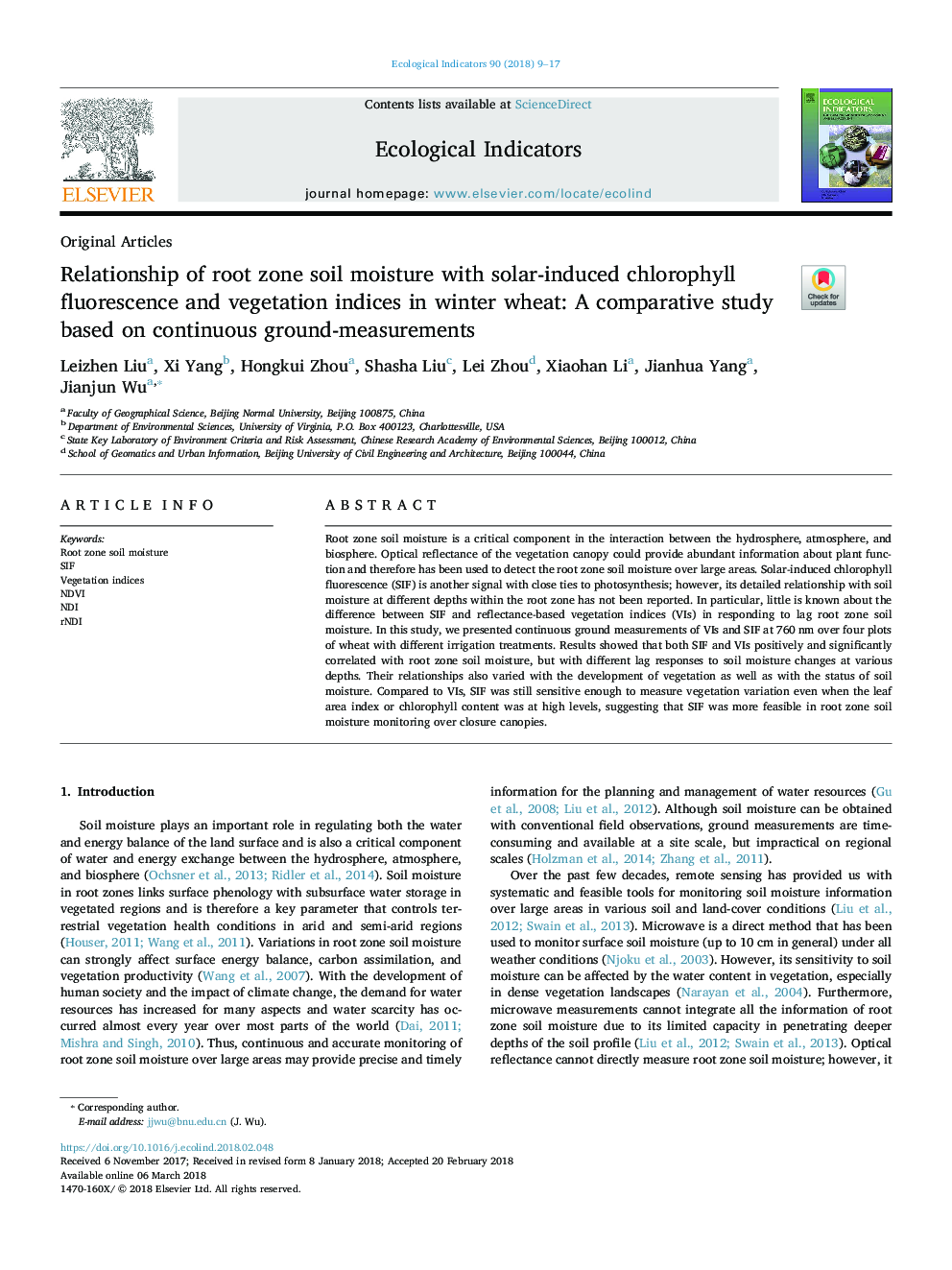| Article ID | Journal | Published Year | Pages | File Type |
|---|---|---|---|---|
| 8845323 | Ecological Indicators | 2018 | 9 Pages |
Abstract
Root zone soil moisture is a critical component in the interaction between the hydrosphere, atmosphere, and biosphere. Optical reflectance of the vegetation canopy could provide abundant information about plant function and therefore has been used to detect the root zone soil moisture over large areas. Solar-induced chlorophyll fluorescence (SIF) is another signal with close ties to photosynthesis; however, its detailed relationship with soil moisture at different depths within the root zone has not been reported. In particular, little is known about the difference between SIF and reflectance-based vegetation indices (VIs) in responding to lag root zone soil moisture. In this study, we presented continuous ground measurements of VIs and SIF at 760â¯nm over four plots of wheat with different irrigation treatments. Results showed that both SIF and VIs positively and significantly correlated with root zone soil moisture, but with different lag responses to soil moisture changes at various depths. Their relationships also varied with the development of vegetation as well as with the status of soil moisture. Compared to VIs, SIF was still sensitive enough to measure vegetation variation even when the leaf area index or chlorophyll content was at high levels, suggesting that SIF was more feasible in root zone soil moisture monitoring over closure canopies.
Related Topics
Life Sciences
Agricultural and Biological Sciences
Ecology, Evolution, Behavior and Systematics
Authors
Leizhen Liu, Xi Yang, Hongkui Zhou, Shasha Liu, Lei Zhou, Xiaohan Li, Jianhua Yang, Jianjun Wu,
